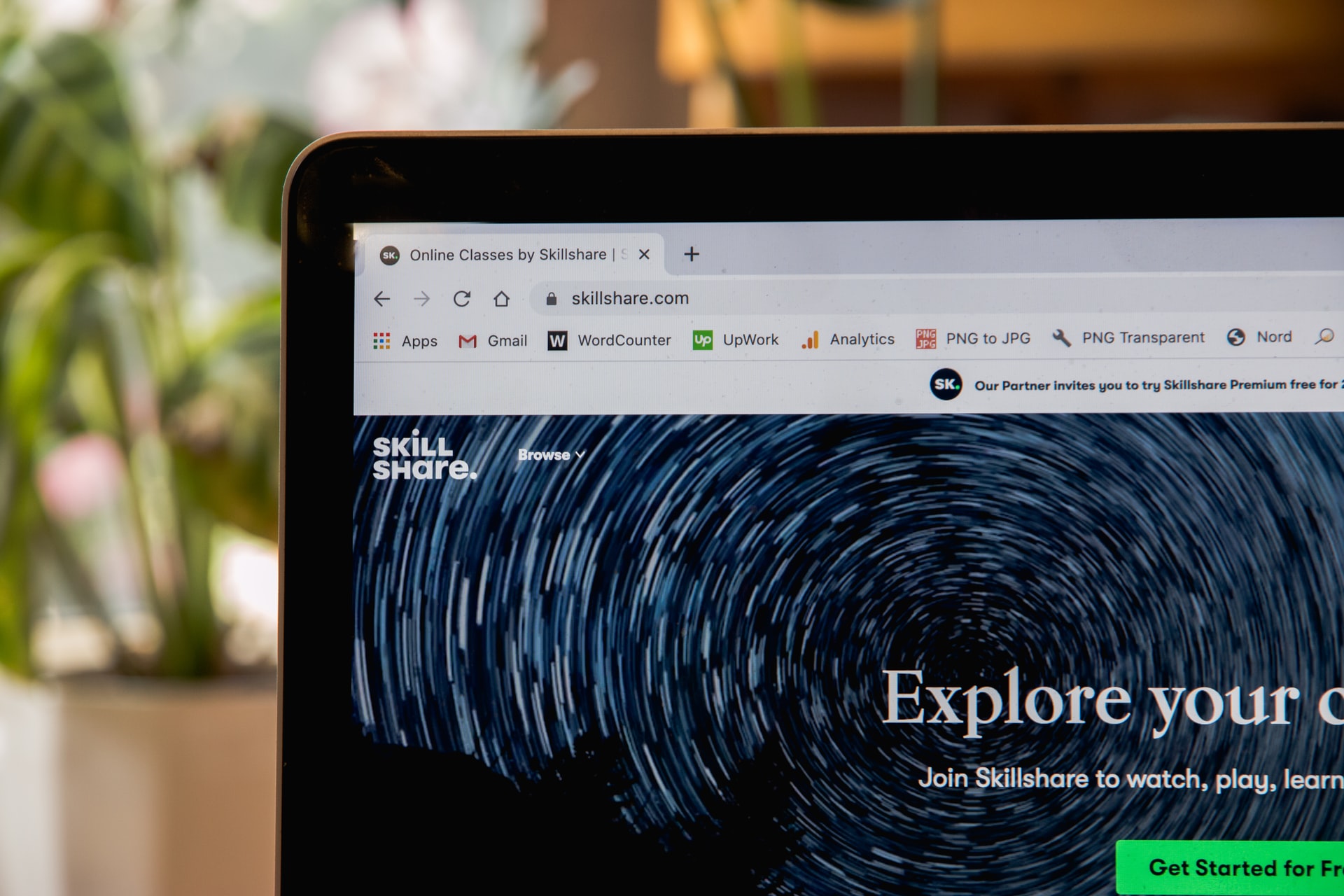Are you looking to maximize your online course revenues? Pre-selling your online course is a powerful tool that could help you to do just that. In this article, we’ll provide you with all the tips and tricks necessary to not only pre-sell first course effectively but also to optimize sales before, during and after launch.
From understanding consumer behavior to using the right marketing strategies, we’ll cover everything you need to know to ensure maximum profitability and success from pre-selling your course. So if you’re looking for an edge in a crowded marketplace – read on!
What Does Pre-Selling Your Course Look Like?
Pre-selling an online course is a powerful way to generate interest and excitement for your course before it even launches. It’s an effective marketing strategy that can help you reach more potential customers, build trust with them, and increase sales. The twofold goal of pre-selling a course is to create anticipation and buzz around the launch while also collecting valuable feedback from early adopters.
To successfully pre-sell your online course, start by creating compelling content such as videos or other blog post posts that explain what the course will cover and why it’s important. Use stylistic devices like metaphors, similes, personification, alliteration, and repetition to make your message stand out. You should also consider offering discounts or bonuses for those who sign up early in order to incentivize people to purchase ahead of time.
The advantages of pre-selling are numerous: creators get access to valuable customer feedback prior to launch which helps them refine their product; customers benefit from discounted prices; both parties gain exposure through word-of-mouth marketing; and creators have the opportunity to test different pricing models without risking too much money upfront.
There are many examples of successful pre-sale campaigns that demonstrate how this strategy works in practice. For instance, when launching his online photography class “Mastering Lightroom” photographer Scott Kelby offered a 50% discount on the first 100 students who signed up—and sold out within 24 hours! Similarly, author Seth Godin used email newsletters as part of his campaign for his book “This Is Marketing” which resulted in over 10 thousand copies being sold before its release date!
In conclusion, pre-selling an online course is an effective way to generate interest in your product prior to launch while also providing benefits for both creators and customers alike. By following these steps—creating compelling content using stylistic devices; offering discounts or bonuses; testing different pricing models—you can set yourself up for success when it comes time for your big launch day!

Benefits of Pre-Selling Your Online Course
Pre-selling your online course offers numerous advantages for both customers and course creators. For starters, customers will have access to discounted rates and be able to build relationships with instructors and peers beforehand. This increases customer loyalty and trust, meaning they are more likely to opt-in when the official course is eventually released.
When it comes to course creators, pre-selling provides a unique opportunity to validate the idea behind their course and receive genuinely useful feedback. Pre-sellers have already paid for the course so they have skin in the game. Because of this, they are better qualified than someone who just provides an email address but isn’t invested. Pre-selling also allows creators to define the market size for their course and gain insights that can further shape the development of their project. Furthermore, it is a great strategy for generating sales, building brand awareness and improving credibility.
Other strategies course creators use to validate the demand for their product include conducting surveys, researching competitor courses and identifying general customer pain points. All of this information can then be used to refine the course material and ensure the course topic overall value is maximized.
In summary, pre-selling an online course offers numerous benefits for both course creators and customers alike. Customers can take advantage of discounted prices, build relationships and become part of an insider group. Creators benefit because they can validate the concept of their course and reconstruct their marketing plan based on customer feedback. Pre-selling also offers potential customers an incentive to invest in the course before it’s officially launched and gives the creator an opportunity to gain higher conversion rates, brand visibility and credibility.
How to Create a Pre-Launch Offer and Promote Your Course
Pre-selling an online course is a great way to validate your idea, set realistic goals and create a successful launch plan for your product. It’s the first step that successful online course creators take before launching any course. From webinars to lead magnets, email sequences and video courses, there are many strategies available to get started selling online courses.
It’s important to demonstrate the value of your course by offering discounts or bonuses during pre-sales, as well as setting clear deadlines for when customers will have access to the course. This ensures they can start benefiting from what you have to offer before the course even officially launches. During this phase, gathering feedback is extremely valuable to ensure the course meets customer expectations, so it’s wise to take advantage of advanced tools such as those offered by Kajabi. In addition, implementing goal-setting strategies can help measure success and create realistic objectives.
Lead magnets are an ideal way to attract potential customers to your course while offering bonuses can increase demand. For example, offering exclusive content such as interviews with experts, PDFs, physical products or other online courses to customers who purchase your online course will certainly work in your favor. Utilize retargeting ads, social media, and other promotional techniques to create urgency for the pre-sale. As for the sales page, focus on making it stand out with visuals like photos, videos, and engaging copy. Generating social proof will also go a long way in increasing sales.
Before pre-selling an online course, it’s essential to understand the potential rewards. Pre-selling provides product validation, minimizes risk, helps create brand awareness, increases sales, gathers feedback, and more. It also acts as a litmus test for the viability of the course idea, as prospective customers offer invaluable insight into crafting the perfect course.

Outline Your Offer
Outlining an effective offer for your pre-launch process is key to the success of your online course business. Pre-selling an online course offers several benefits, such as validating the idea, gathering feedback, and providing product ideas. Through feedback from the targeted audience, a course creator can make revisions to their course content and improve upon it. There are numerous strategies that can be utilized to effectively pre-sell create online courses with, such as webinars, email sequences, lead magnets and video series.
These strategies can help generate demand for an online course and prove beneficial in terms of brand awareness and engagement. Offering potential students a discounted price on their first purchase of the online course is attractive as a marketing tactic. Additionally, setting goals and aiming for certain target numbers can help assess a course concept’s potential success prior to its launch. Course creators must also understand all the necessary tools needed to properly pre-sell their course. Lead magnets, coupons, and powerful email sequences can all help complex the process.
Finally, access to the course must be provided after the sale period has ended, giving eager customers what they paid for and allowing them to reap the benefits of the course material. Pre-selling an online course helps build trust with customers, promote your brand, and ultimately help you reach your goals, so it’s important to know how to design an effective presale launch page.
Create a Plan & Set Clear Goals
Creating a plan and setting clear goals for your online course is an important part of pre-selling. Customer sales validate an online course idea and give an indication of how much time and effort is required to create a successful product. Applying coupon codes to advance sales can provide a quick boost in signups. Advertising your course to various platforms such as a Facebook group, Instagram and Twitter could significantly expand your target audience.
Once the course is available, be sure to set a deadline, taking into account user feedback to help improve the course. Gathering user feedback to modify the course content is crucial and tracking who signs up and interacts with the course is a great way to identify interest trends and preferences. Email sequences can also help to successfully drive users through a funnel to ultimately purchase the course. Once the pre-sale period ends, ensuring participants have access to the course material is a top priority.
Designing a pre-sell launch page can be tricky and requires research and planning. Setting strong incentives, such as exciting bonuses and discounts, can be used to attract buyers. You must also create a sense of urgency; without a deadline, sales won’t grow. By building buzz for your upcoming course, you can stay top of mind for potential students.
Creating a perfect sales page for your online business of course involves using visuals such as photos, videos, and eye-catching headlines. You should also leverage social proof to increase sales and incorporate trust markers such as logos and third-party reviews.
Design Your Pre-Sell Launch Page
Designing a pre-sell launch page can be a daunting task, however setting up effective marketing blueprints with platforms such as Kajabi can make it easier. Appealing bonuses are one of the most successful tactics used to entice customers to buy your course. Group calls, additional classes, PDFs, interviews with experts, physical products, free resources, special discounts and more are just some of the extras that can be bundled with your online course offering.
Creating a sense of urgency is an important factor too, so it’s important to use countdown timers and discount codes to increase the pressure. Building buzz around the upcoming course is necessary to increase demand and pre-sell more units. Potential customers need to be convinced about why they should invest their time to learn from your course. It’s also important to make sure people trust the instructor and a good marketing strategy and high-quality content play a major role.
Having an impressive online course sales page is essential for successful conversions. Visuals are incredibly important, so be sure to include photographs, videos, diagrams, bullet points and testimonials. Offer a compelling and authentic story to present yourself as knowledgeable teacher and inspire trust in prospective customers. Additionally, free courses can act as a lead magnet, generating interest and informing people of what your course has to offer.
By following these steps and focusing on providing value and great customer service, you’ll be on your way to successfully pre-selling your online course. Gather relevant customer research and analyze market demand to start creating the perfect pre-sell launch page and landing pages to maximize results.

Is Pre-Selling an Online Course Ethical? Yes, and here’s why…
When it comes to launching an online course, pre-selling the course is a popular tactic used by many course creators. On the surface, pre-selling may seem unethical: after all, you’re asking prospective customers to purchase your product or service before they’ve seen the final result. But on closer inspection, we can see that when done right, pre-selling can actually be an ethical and effective way to fund development, receive feedback, and generate anticipation for your launch.
For those starting out in the course- creation software business, pre-selling your course is an invaluable tool for gathering research and validating the demand for the course. It allows course creators to gather key insight from their target audience and make necessary changes before releasing the course. Plus, it helps to create more trust between the customer and course creator as it bridges the gap between idea and reality.
The benefits of pre-selling an online course go far beyond market research. It provides a sense of urgency and encourages people to act quickly if they wish to get in on the offer. It also gives course creators the chance to collect sales revenue before the course is even released. This gives course creators an opportunity to fund the development or marketing efforts needed to make the course a success.
When it comes to pre-selling your online course, there are several important steps to take. It’s important to outline the specifics of your offer and set clear goals as this will help with the implementation of your pre-sale strategy. You’ll need to design a pre-sale launch page which includes free content such as sneak peeks or exclusive discounts. Once the launch pre sell sales page is live, you can start promoting the pre-sale using various tactics including email campaigns, webinars, social media posts, advertisements and more.
And don’t forget about the importance of gathering feedback during the pre-sale phase. This is essential for course creators as it gives you an opportunity to adjust the course if necessary based on the responses from your prospective customers. It will also help you identify any areas needing improvement ahead of the official launch date.
Some may argue that pre-selling an online course is unethical due to the fact that customers cannot always be sure that the course creator will deliver what was promised. However, we must remember that pre-sales are nothing more than a practice that provides extra assurance to customers. You are not asking them to purchase the exact same thing twice. The pre-sale is merely a way to back up our promise of providing value to customers.
Moreover, platforms such as Kickstarter and Indiegogo are built entirely on the idea of pre-selling products and services. This should serve as an indication of how viable and accepted pre-selling has become as an ethical business practice.
Nonetheless, it’s worth considering the potential risks associated with pre-selling an online course. Not meeting expectations or failing to deliver on time are very real possibilities. To mitigate these risks, course creators need to ensure that the content and materials they provide during the pre-sale phase reflects the finished course. Additionally, ensuring all the terms and conditions are made clear to customers beforehand is essential.
In conclusion, pre-selling an online course is an ethical and effective ways to not only validate the demand for the course but also to gain insight from prospective customers, fund development, and build anticipation for launch. Although there are certainly some risks involved, as long as course creators are transparent with customers, pre-selling a course can help increase trust in the brand and bring in money to cover production costs. And that’s why, with the right approach, pre-selling an online course can be both ethical and profitable.
What if My Presale or Pre-Launch Doesn’t Go According to Plan?
When a course creator puts in the hard work to create an online course – from market research and course idea, to content creation process and design – it can be disheartening when few people sign up during the pre-sale. It’s important to remember that just because there was no interest in pre-selling your online course doesn’t mean you should scrap the course idea altogether. The feedback collected during the pre-sale is incredibly valuable; use it to inform your course improvement and promotion plans to better engage potential students. Don’t extend the pre-sale deadline, as this might frustrate those who already purchased the course and make them even less likely to purchase the final product.
If your pre-sale or pre-launch does not go according to plan, take note of the following steps to close the offer quickly and move ahead with selling your online course: 1. End all promotional efforts related to the launch. 2. Drop early bird pricing and any additional bonuses if desired. 3. Continuously collect data about the pre-sell process and store it in a Google Sheets spreadsheet for later reference. 4. Send out a last-chance email prior to the pre-sale deadline. 5. Consider offering a free version of the course to gain customer trust. 6. Leverage platforms such as Kickstarter and IndieGoGo to pre-sell products and services.
Launching an online course with very few customers (or none at all) can be a huge risk. However, by taking extra steps to increase awareness and build trust in a course creator’s brand, the risk can be mitigated. Pre-selling a course gives course creators the chance to test the viability of their new course idea and gauge potential student interest.
Overall, pre-selling an online course offers many advantages over launching without pre-selling. It helps course creators minimize the risk associated with launching a course, build trust, validate their course idea, and measure demand before committing too much time and money into creating the course. As long as course creators are well-prepared for pre-sale and pre-launch and willing to use customer feedback constructively, the pre-selling course creation process can be a great way to get the word out about their course and increase sales before launch.
Conclusions and Next Steps
The previous sections of this article outlined key concepts for pre-selling an online course. We looked at the benefits of pre-selling your online course software and explored techniques of setting up a pre-sale offer. Additionally, we discussed the ethicality of pre-selling an online course. Finally, we discussed what to do if your pre-sale or pre launch isn’t successful.
In conclusion, pre-selling your course can be beneficial in helping you generate sales and grow your community before your course is launched. To pre-sell your course, you need to have an effective strategy and plan in place. Steps such as outlining your offer, creating a plan and setting clear goals help to make sure that your launch is successful. Pre-selling an online course is completely ethical, as long as it is done in accordance with appropriate standards for business practices.
Moving forward, once you’ve determined pre-sales are the right choice for your online course platform, start using the Ultimate Online Course Launch Checklist. This checklist contains all the steps needed from creating a valuable offer, scheduling emails and promotions, building trust with your audience and more. Following this checklist will ensure a successful pre-sale leveraging maximum numbers which ultimately gives you the best chance for success with your online course launch.
Summary
Overall, pre-selling an online course can be a powerful and effective way to generate sales, sell online courses and build an audience prior to launching it. With the right strategy and planning, any course creator is capable of pre-selling their product in a way that is beneficial for both their customers and themselves.
To pre-sell a course, it is essential to outline an offer and provide incentives, create a plan and set clear goals, design an effective pre-sell launch and landing page, understand potential rewards, and adhere to ethical standards. Having proven marketing tactics and tools on hand to reach customers and measure results will help tremendously as well.
For those looking to successfully pre-sell an online course, understanding the necessary steps outlined in this article is key. Pre-selling pre selling online courses may require additional time and effort, but doing so can pay off with better conversion rates, ROI, customer feedback, brand visibility, and credibility, among other benefits. With the potential financial reward in mind and careful planning, everyone can learn the best practices for pre-selling the perfect course.

Frequently Asked Questions
Is it profitable to sell courses?
Selling courses can be a great way to generate an income if you choose a topic that your target audience is interested in and deliver content of high quality. With the right marketing strategy, you could easily start making profits from your courses.
Can i sell my course online?
Yes, you can definitely sell your course online. However, it requires some planning and preparation with creating a marketing strategy, setting up the course landing page right platforms, and engaging your customers.
Take the time to develop a successful plan that works for you and your course in order to earn the most from the sale of your online course.
Is it profitable to sell an online course?
Selling an online course can be profitable when done correctly, by offering quality content and reaching the right audience. With the right strategy and modern platforms, you can launch your first online course and start reaping the rewards.
Creating an online course requires careful planning and research. You need to determine the topics you will cover, the format of the course, and the pricing structure. You also need to consider the best way

